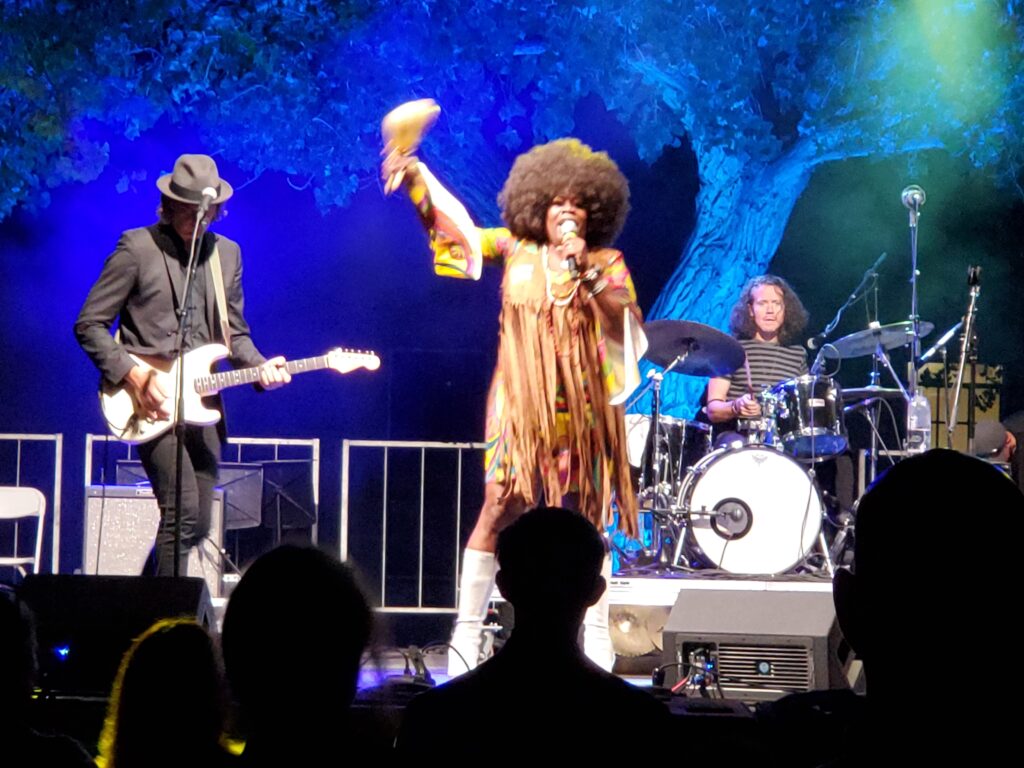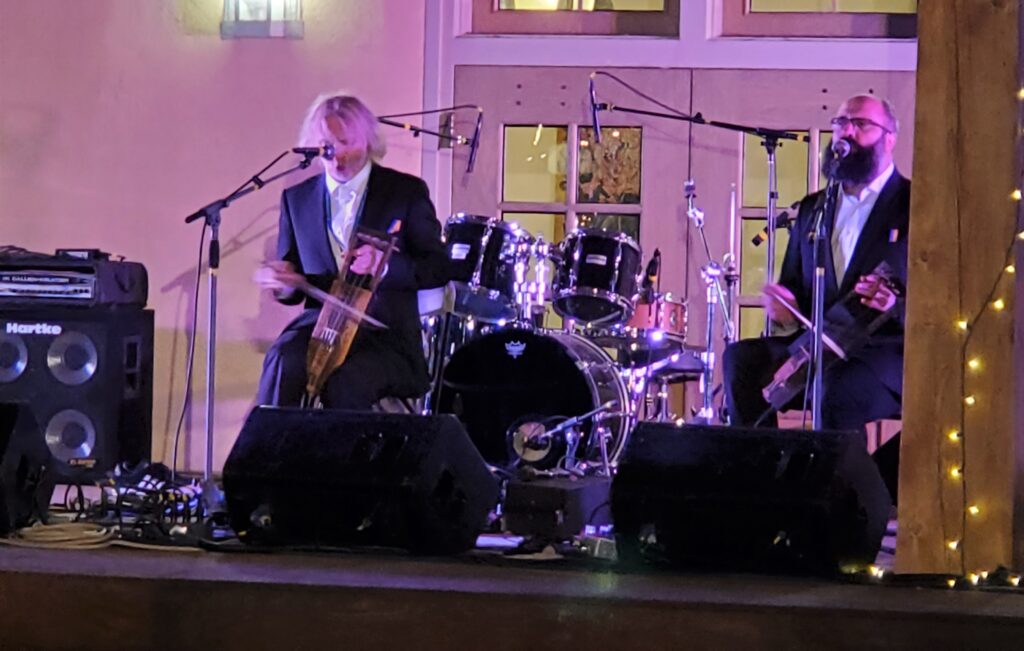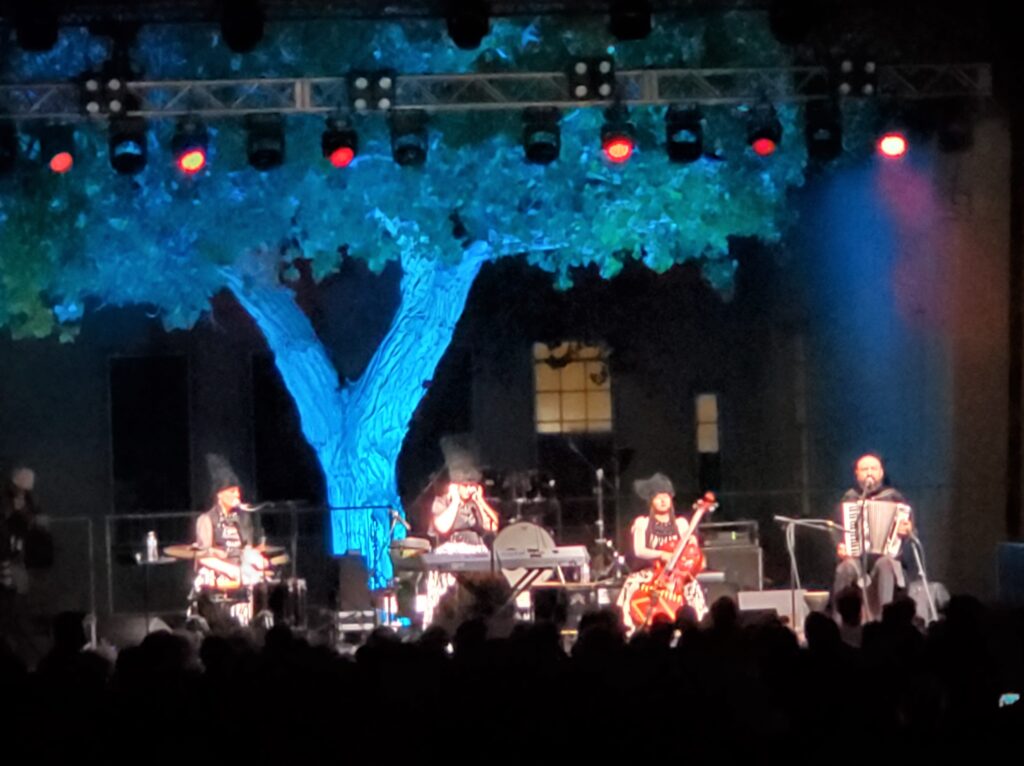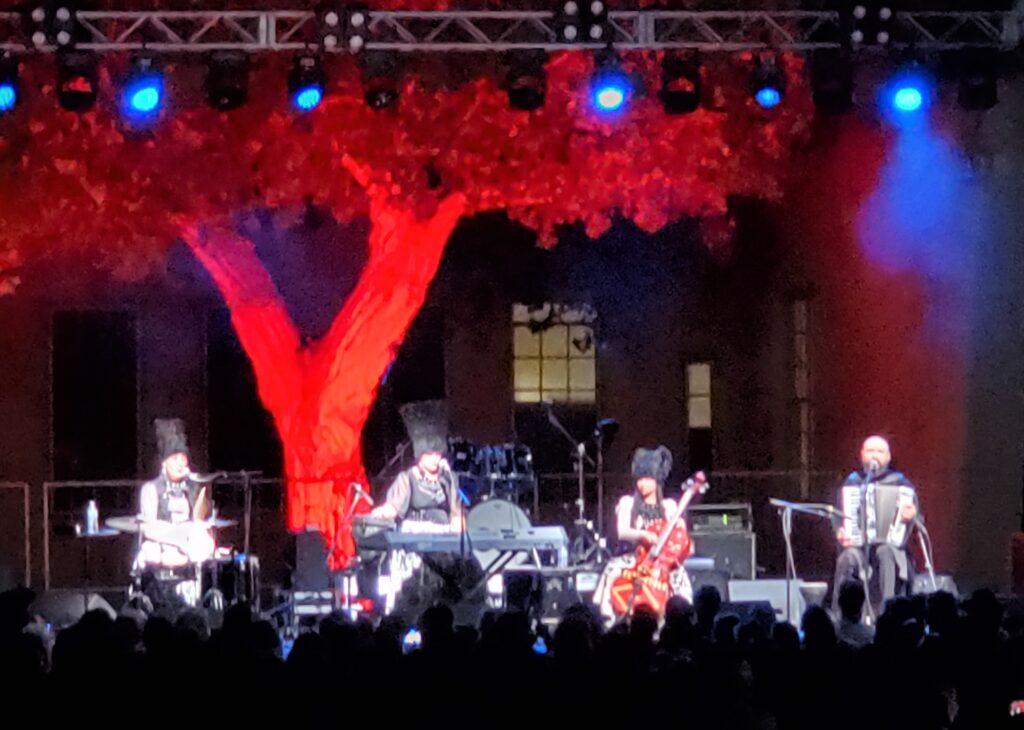If music is the universal language, dancing is the universal sign-language.
To support his claim that “music is the universal language,” Henry Wadsworth Longfellow didn’t need to search any further than the annual music festival ¡Globalquerque! in Albuquerque, New Mexico (September 22-24). Though this was my first (and not last) time to attend the festival, New Mexico has been having this annual celebration of “world music and culture” for 18 years. It is a beautiful event hosted by the National Hispanic Cultural Center that brings out the best in a small city like Albuquerque and impresses the heck out of big city folk. This year’s line-up included 18 unique musical acts over three days and two nights on three separate stages. It is physically impossible to see and hear everything, but try we did and had a blast along the way.
The audience at the Cultural Center was predominantly a sea of salt and pepper heads and, my educated guess, waves of quality arch support inserts. This might be where old hippies go to dance, but then there were old executives, truckers, and administrative types enjoying the fruits of their retirement. Not everyone in this demographic will rush to the latest Stones re-reunion tour. Some early seniors are still expanding new horizons. I felt we were collectively extending our cultural reach beyond the borders without needing a passport. Even if I haven’t seen the world, I have certainly heard it in Albuquerque.
The weekend festival includes daytime programming that focuses on Native American and New Mexican culture with demonstrations and presentations. Weaving, wood carving, and storytelling workshops are at the heart and producing inspired crafts. There are native dancing workshops. Dancing is a predominate force at this festival. Dancing is the universal sign-language at ¡Globalquerque!
Next we made our way to Journal Theatre (the one indoor venue) having missed the first 20 minutes of Kolonien, a four-member family band who brought us new wave Swedish Folk music. Clearly accomplished musicians the in-between song banter is consistent with their sweet and soulful playing. This was their first time to the festival and I suspect they too will be back.
Immediately afterwards, we hustled ourselves to the Fountain Courtyard for Puuluup, a folklore duo from Estonia. Set aside your assumptions about Estonian folklore, these two masterful musicians use blocks and talharpa (a bowed lyre) to bring a surrealistic effect to their traditional music. The dancing beat with lighthearted strings and the humorous banter in between songs, there is still so much to like here. There is more here than what meets the ear.
Every global music festival has room for good old rock and roll. Bette Smith brought all that and her gospel and soul influences. A treat from our very own Brooklyn, New York, Bed-Sty to be exact, if the plaza had a roof Bette would’ve blown it off at the seams. Imagine, if you will, Betty Mabry and Miles Davis had produced a prodigy; Bette Smith is it. Bette Smith struts and moves a lot like Betty Mabry, not as bawdy but she’s got some stuff—great vocals to belt a tune, good material, good looks, and pizzazz. This Bette, like the other Betty, left nothing on the table or on the stage. Billed as a “force of nature,” this is nature’s Category 1.
That would’ve been enough for any Friday night, but there was still hip-hop artist and activist Vox Samboa from Limbé, the north part of Haiti. While I appreciate the genre, I’m not usually a big fan of hip-hop. Vox Sambou’s hip-hop, with the help of his 9-piece band, fuses traditional rhythms of Haiti, Afrobeat, and reggae. I dare you to stay in your seats. Samboa also played Saturday night, he was first on the Journal Theatre stage.
We were able to catch the last twenty minutes of Son Rompe Pera in the Fountain Courtyard. A family of five percussionists from the suburbs of Mexico City with generational roots in marimba, they bring their music into the 21st century by playing this generation’s urban sounds using the instruments of their forebears. It seems like a great homage to their ancestors while reaching out a hand to contemporaries.
Robert Mirabal, from Taos Pueblo lands and culture, is worth mentioning. He brought it down to earth with his Native American traditions, calling on the Four Directions using a few different flutes and backed by a full electric band. Ageless and timeless, Mirabal is a welcomed regular at ¡Globalquerque!
There were technical differences between the two nights. Everything ran on time Friday night, the sound on each stage was consistently good, and from a purely spectator’s view, everything ran smoothly. Saturday night had some technical snags. There was a rumor about no sound checks which led to the night getting off schedule. The biggest distraction on Saturday was the lighting in the Plaza Mayor Stage. For some reason, during the DakhaBrakha set, they had strobe lights waving into the audience, like a Rave. With a risk of seizures in this crowd, the lights were also a painful distraction. Someone did not understand their demographic.
Another returnee to the festival, wearing traditional Ukrainian garb (including tall fur Cossack hats) and playing traditional Ukrainian instruments, is DakhaBrakha, a quartet from Kyiv. They easily live up to the hype that comes with their multiple awards. Made up of percussion, cello, accordion, and vocals, one does not expect their playing will get up to 78 rpms. This unique ensemble evokes a new music. Avant garde is too easy a term, though it is relevant. Traditional folk with big dollops of punk rock is a better description. DakhaBrakha is exciting and new, they are Ukrainian people and culture. The uproar of applause was not solicitous, it was well earned.
Vendors with traditional tents sell everything from handmade leather goods to hand-painted greeting cards made by school children in Ukraine. There were few food offerings with a limited selection from two food trucks– one offering Caribbean and the other local New Mexican fare. One food tent with “ND IN” offerings (local speak for “Indian.”). I don’t know how authentically Native the food is as I had two hamburger patties on flat bread. While not vegetarian, that is more beef than most anyone can eat in one sitting. Which brings up a minor complaint, especially considering the medium age, there were limited seats for eating. There was plenty of seating for entertainment, not that many stayed in their seats. The festival provided a lackluster culinary experience.
Speaking of food, don’t leave Albuquerque without enjoying some true Native New Mexican fare. I can highly, and strongly, recommend Indian Pueblo Kitchen (on 12th Street NW). The Blue Corn Onion Rings is as close to a religious experience that I’ve had in awhile. Everything is wonderful, including the décor and the sweet and attentive service. Be sure to treat yourself to any or a few of the famous Pueblo Pies.
A few new truths I’ve taken away from ¡Globalquerque!: Estonians have a great sense of humor and Globalquerians love to dance. When the dance floor was not taken up with acrobatic artists from Guinea, the music pushed and pulled us out of our chairs to fully realize what was happening. The Dr. Scholl’s inserts practically jumped up on their own volition. It is worth mentioning that all kinds of dance were represented on the floor, free-style, merengue, box step, swing, point-by-point salsa, and more.
The mission of ¡Globalquerque! is about understanding. The festival reaches beyond geographical and cultural borders with a consistent message of understanding differences so that they become familiar. When that happens, we expand what makes us alike, our cohesiveness. And what better way to accomplish that than with the universal language.
Well done ¡Globalquerque!




